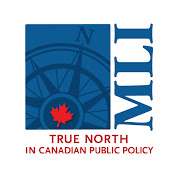In this video course, you will learn how to create, customize, and publish three distinct GPT applications tailored for the ChatGPT Store. This step-by-step guide is designed for individuals who want to expand their knowledge of AI development and leverage the ChatGPT platform to build powerful and interactive AI-based applications. By the end of this course, you will have created three GPTs, each serving a different purpose, and will be able to confidently upload and publish your own AI-driven apps to the ChatGPT Store.
The course is structured around the creation of three diverse GPT projects:
Sentiment Analysis GPT: The first GPT you will develop is focused on Sentiment Analysis. This GPT will take a text input from the user and accurately determine the sentiment behind the phrase or statement provided, whether it’s positive, negative, or neutral. Sentiment analysis is an essential tool in understanding customer feedback, social media trends, and public opinion. In this section, you will learn how to implement natural language processing (NLP) to analyze human emotions, develop algorithms that recognize patterns in language, and provide insightful outputs for users.
Image Describer GPT: Next, you will dive into building a GPT designed for image description. This GPT requires users to upload an image, which the GPT will then analyze and describe in detail. Whether it’s to assist visually impaired individuals or to automate descriptions for digital media, this functionality can be used across various industries. You will learn how to integrate image processing capabilities within the GPT framework, using pre-built models and APIs that help extract key features from an image. Through this, you will understand how GPTs can interpret visual data and turn it into meaningful descriptions for end-users.
Travel Architect GPT: In the final segment, you will create a highly practical application called the Travel Architect GPT. This tool helps users plan travel experiences by recommending destinations based on their preferences and the provided knowledge base. The GPT can make personalized travel suggestions, taking into account factors like budget, preferred activities, climate, and more. This part of the course will cover advanced customization options and how to develop a GPT that interacts with a large dataset, curating responses that are highly tailored to each user’s input. You will also learn how to upload this GPT to the ChatGPT Store and publish it, making it available to the public. The Travel Architect GPT is live and can be accessed at Travel Architect GPT – https://chatgpt.com/g/g-QCWUQaib3-travel-architect
Throughout the course, you will not only gain the skills needed to build GPTs but also understand the steps required to publish these applications on the ChatGPT Store. You’ll be guided on how to optimize your app for discoverability, create engaging descriptions, and manage updates.
By the end of this course, you will have developed a deep understanding of the GPT development process, from conception to deployment. This hands-on approach will enable you to create AI applications that meet specific user needs, whether for personal use, business, or public release on the ChatGPT Store. Join now to unlock the potential of AI and start building your own innovative GPTs.









![Inc. Names Arbor Scientia Group as a 2024 Power Partner Award Winner | PR Newswire [Video]](https://aimarketingshowcase.com/wp-content/uploads/2024/11/mp_549414_0_6734d1c4bdfe5imagejpg.jpg)
![Benchmark of a new generation - AUDI E concept [Video]](https://aimarketingshowcase.com/wp-content/uploads/2024/11/mp_549609_0_1393354532BenchmarkofnewgenerationAUDIhiresjpg.jpg)
![Draft resolution to dissolve DEI programs sparks debate in Idaho [Video]](https://aimarketingshowcase.com/wp-content/uploads/2024/11/mp_553894_0_FeaturedImageFallbackTopStory1jpg.jpg)

